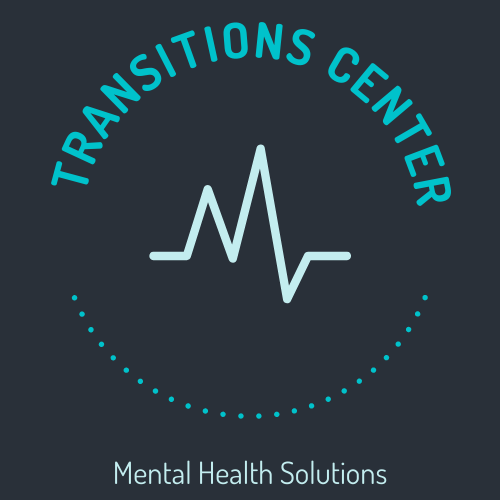Anxiety is a common and useful emotion. When an individual experiences disproportionate amounts of anxiety on a regular basis, however, it can become a medical condition. Anxiety disorders are a group of mental illnesses that cause extreme nervousness, anxiety, trepidation, and concern.
These conditions affect a person’s emotional processing and behavior, as well as causing physical symptoms. Mild anxiety can be disturbing and uncertain, whereas extreme anxiety can have a significant impact on daily life. In the United States, 40 million people suffer from anxiety disorders. It is the most prevalent mental condition in the United States. Only 36.9% of people with anxiety disorders, on the other hand, are treated.
Common Causes of Anxiety
Anxiety disorders have a variety of causes. Many things will happen at the same time, some things will lead to others, and some things won’t lead to an anxiety disorder unless another one is present. The following are some of the possible causes:
- Workplace stressors, relationship issues, and family issues are all examples of environmental stressors.
- Anxiety disorders run in families, so people who have a family member with one are more likely to develop one themselves.
- Medical causes, such as symptoms of another illness, drug side effects, or the stress of a major surgery or long recovery time
- Brain chemistry, as psychologists describe certain anxiety disorders as hormonal and electrical signal misalignments in the brain
- Use of or withdrawal from an illegal substance: The stress of everyday life, in combination with any of the aforementioned factors, can play a role in the development of an anxiety disorder.
Diagnosis
Before you take some other tests, you can fill out a self-assessment questionnaire. This will help you figure out whether you have an anxiety disorder or if you’re just responding to something. If you think you may have an anxiety disorder based on your self-assessments, your doctor may ask you to complete a psychiatric examination or hold a formal interview with you. One or more of the following tests can be used by your doctor to determine your level of anxiety.
- Obsessive-Compulsive Scale (Yale-Brown). The YBOCS is a tool for determining OCD severity. It’s a one-on-one session with a mental health specialist. You choose three of the most distressing symptoms from a symptom checklist and rate their severity. Following that, you’ll be asked if you’ve ever had any other obsessions or compulsions. Your OCD is classified as subclinical, mild, moderate, intense, or extreme by the mental health professional based on your responses.
- The Generalized Anxiety Disorder Scale (GADS). This screening method for generalized anxiety disorder consists of seven questions. You’re asked how much you’ve felt irritability, nervousness, or anxiety in the last two weeks.
- Penn State Worry Questionnaire. This is the most commonly used anxiety exam. It differentiates between social and generalized anxiety disorders. The 16-question test assesses the generality, excessiveness, and uncontrollability of your worries.
- Social Phobia Inventory (SPIN). This 17-question self-test determines the level of social anxiety. On a scale of zero to four, you score your anxiety in different social situations. There is no fear when the number is zero.
- Hamilton Anxiety Scale (HAM-A) The Hamilton test, first developed in 1959, was one of the first anxiety rating scales. In clinical and laboratory environments, it’s still commonly used. It asks 14 questions about moods, fears, and stress, as well as physical, emotional, and behavioral characteristics. The Hamilton test must be administered by a trained professional.
- Beck Anxiety Inventory (BAI) The BAI is a tool that can be used to assess how severe your anxiety is. You are free to take the exam on your own. A specialist or paraprofessional can even offer it to you orally. There are 21 multiple-choice questions on which you would rate your symptoms over the last week. Tingling, numbness, and feasibility are some of the signs.
- The Zung Self-Rating Anxiety Scale. A 20-item questionnaire makes up the Zung evaluation. On various topics, you are asked to rate your anxiety on a scale of “a little of the time” to “most of the time.” After you’ve finished the questionnaire, your answers will be evaluated by a qualified professional.
About the Authors
Transitions Center for Natural Mental Health Treatments for a variety of physical and mental dependency issues and conditions. Substance use disorders are difficult to understand for many people. The physical and mental aspects of any substance disorder are complicated and unique to the individual suffering. The differences between physical and psychological dependency vary but have some similarities. Transitions Center for Natural Mental Health Treatments help the public know what to look for as a means of helping a loved one cope with the challenges of mental health disorders.
Special thanks to Mary Jane’s CBD Dispensary one of the top cbd online stores. We’re so glad you found our site. You can find your way back to the blog anytime by clicking on our logo at the top of any page or using our site map for a complete list of pages and their associated content. If you want to stay connected with Mary Jane’s CBD Dispensary, we would love it if you could check out their site today! And don’t forget about Facebook and Twitter too – both are great ways to keep in touch with what’s happening at MJCD. Until next time!

